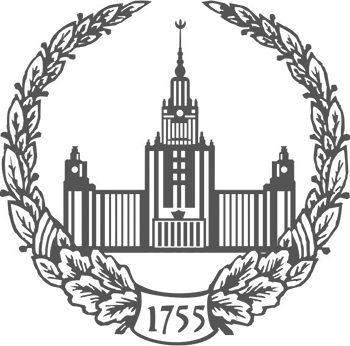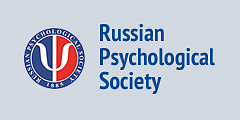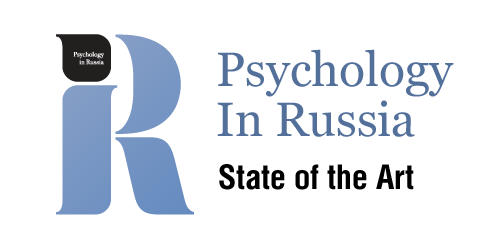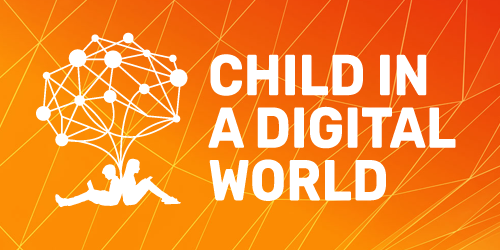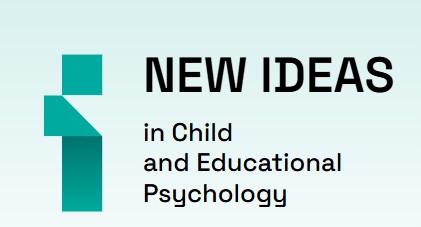Empirical studies
-
-
Relevance. The relevance of the study of youth representations of parenting is due to a number of socio-economic and psychological changes taking place in modern society, including the emergence of deviant forms of parenthood, the phenomena of mixing family roles and abandonment of parenthood in general.
Objective. The purpose of this study is to study the content features of representations of motherhood and fatherhood in girls and boys and determine the degree of their harmony as a condition of psychological readiness for parenthood.
Method. Content analysis of the respondents' essays on the topic of future parenthood, aimed at identifying the content of the features of representations of parenthood and the degree of their harmony in girls and boys.
The study involved 231 respondents (190 girls and 42 boys), aged 18 to 25 years.
Results.The main characteristics of parenthood as a special social role and activity: child care; creation of necessary conditions for the development of the child; education of the child; emotional support of the child. It is revealed that in the views of girls the most important function of motherhood is to provide emotional support to the child; in the views of young men about fatherhood - education and training of the child. The majority of respondents demonstrated a high degree of discrepancies of perceptions about parental functions related to the idealization of the images of the child and their own parenting and the lack of representations about the methods of implementing maternal and paternal roles.
Conclusions. The data obtained show that the surveyed young people are not ready to realize a parental role and require corrective work aimed at forming realistic, complete and adequate representations of motherhood and fatherhood before their occurrence.
Keywords: maternal and paternal role; representations of parenthood; psychology of parenthood DOI: 10.11621/vsp.2018.02.89
-
-
-
Relevance. The relevance of the research is caused by the need of more detailed studying of the emotional and personal well-being of modern students for the purpose of rendering psychological assistance to them on its optimization.
Objective. The work purpose — the analysis of various aspects of emotional and personal well-being of students. Methods: "Self-assessment of Emotional and Personal Well-being (SEPWB)" of G.A. Glotova and L.V. Karapetyan, "Social and psychological adaptation" of K. Rogers and R. Diamond and "Attributional Style Questionnaire" of M. Seligman.
Samples: the main sample - students (n=430), comparison samples – non-student youth (n=608) and convicts (n=99).
Results. By a method of SEPWB it is shown that students on set of parameters of a self-assessment of emotional and personal well-being occupied an intermediate position between the group of non-student youth where estimates are higher student's and group of convicts where estimates of emotional and personal well-being the lowest; in a number of parameters of a method of SEPWB age distinctions between "younger" (17-20 years) and "senior" (21-25 years) student's groups are received; there were no significant differences between the female and male subgroups of students in direct comparison without taking their age into account, but when divided into two age subgroups (17-20 and 21-25 years old), gender differences were observed; a number of correlations of parameters of the SEPWB method and indicators of "Social and psychological adaptation" method of C. Rogers and R. Diamond and "Attributional Style Questionnaire" method of M. Seligman were obtained; four types of the students differing with the level of a self-assessment of emotional and personal well-being on the basis of the SEPWB index – two extreme types and two intermediate are allocated: students with the SEPWB high index, with the increased index, with the reduced index and the low index of SEPWB.
Conclusions. The results confirm the possibility of using the "Self-assessment of emotional and personal well-being" method for studying the age and gender differences between students, as well as characteristic types of experience and assessment of their inner well-being.
Keywords: emotional and personal well-being; self-assessment; psychological correlates; age and gender differences DOI: 10.11621/vsp.2018.02.76
-
-
-
Relevance. The study is devoted to the problem of family relations in adolescence. This problems seems to become very actual in recent times because of significant changes in family relations concerned with adolescents.
Objective. The hypothesis of different levels of awareness (explicit and implicit) representation of family situation in adolescence in connection with the emotional tone of relationships between family members has been tested in this research. We also propose that this fact s related with the follows parameters: adolescent gender and family unity.
Methods. 45 adolescents (22 girls and 23 boys) age of 13-14 took part in the research: 8 of them are from single-parent families (father missing), 37 – from completed families. The following methods were used: Family image test, Color Test of Relations and the questionnaire of parent’s behavior and attitudes of adolescents by E. Shafer).
Results. Results It was demonstrated that in explicit level adolescents evaluate their family situation more positively than in implicit level. Adolescents of different sex differently evaluate the degree of solidarity and emotional relationships in their families: girls consider their families more joined than boys. Both girls and boys perceive their mother and father more positively in explicit level (questionnaire) than in implicit level. Generally, girls and boys realize the estimations of family situation concerned with cohesion and emotional relationships differently. As a hole adolescents implicitly perceive their mother as more positive and important than the father.
Keywords: parent-child interaction; stages of awareness; adolescence; emotional tone of relationships; family unity DOI: 10.11621/vsp.2018.01.55
-
-
-
The content of the paper refers to the field of interdisciplinary scientific research, lying at the intersection of information theory and cognitive psychology.
Relevance. In conditions of rapid development of communication between people through computers, the transfer and adequate reception of the meaning of an information message are of great importance.
Purpose. Theoretical substantiation and development of the probabilistic approach to the evaluation of the meaning of purposeful human activity on the example of a text.
Methods. Theoretical analysis of probabilistic (V. Nalimov) and activity-related (D. Leontiev) approaches to the problem of meaning in psychology; method of calculating the amount of information developed by K. Shannon; author’s technique for assessing the meaning of a text message, based on a comparative analysis of the source text with its probabilistic representation by random permutation of words.
Results.The justification of the probabilistic nature of sense is given; a psychometric criterion is proposed for quantifying the meaning of purposeful conscious human activity in the form of differential entropy of the exponential distribution of the Shannon entropy difference between two adjacent words in the text; a technique for probabilistic evaluation of the meaning of purposeful conscious human activity taking text as an example is proposed.
The analysis of more than 50 texts - information messages from the Internet, differing in the level of meaningfulness and reflecting various emotional experiences of the authors - showed: a) the greatest meaningfulness is in texts written by authors under the influence of strong emotions; b) texts the style of presentation of which is typical for authors in the state of neutral emotions occupy an intermediate position in terms of meaningfulness; c) the least meaning is in texts written by those who experience some disorder of thinking.
Conclusions. The results confirm the main hypothesis of the study that the meaning is encoded in a chain of semantic connections of purposeful conscious human activity and has a probabilistic nature. The materials of the paper can be of practical and theoretical interest for psychologists dealing with issues of meaning, linguists and developers of artificial intelligence.
Keywords: sense; entropy; Shannon entropy; semantic connection; information; probabilistic model of sense DOI: 10.11621/vsp.2018.01.37
-
-
Lomonosov Psychology Journal, 2018, 1. p. 21-36Krotkova, О.А. , Danilov, Gleb V., Kaverina, M.Yu., Kuleva, Arina Yu. , Gavrilova, Ekaterina V., Enikolopova, E.V.read more6819
-
Relevance. The study of adaptive brain reorganizations during normal human aging is relevant both in the social aspect and in the scientific aspect. It contributes to the development of theoretical ideas about brain providing cognitive processes.
Objective. The aim of the work is to study the mechanisms of changing the volume of visual attention during normal aging using the technology of eye-tracking.
Methods. 30 healthy subjects aged 19-30 years (11 people, younger group) and 50-81 years (19 people, older group) performed an original technique assumed the memorization of triplets of images, their recall and recognition in a series of similar, identical and new images. The memorization was accompanied by the recording of subjects’ eye movements.
Results.In the older group the narrowing of volume of visual attention was obtained. For a 10-second exposure of stimuli in the older group, only the visual information associated with central stimulus was accurately remembered. Results of the older group showed a significant predominance of recall and recognition errors of stimuli over the number of those in the younger group. The differences between the two groups were not found only for the situation of recognition of the central stimulus. In the young group there was a tendency to an asymmetric appearance of errors in relation to the left and the right triplet stimuli. The right stimuli were worse reproduced verbally, and the left ones were less well recognized. In the older group the asymmetry in the recognition and reproduction of stimuli was not detected.
Conclusions. An eye tracking data objectified the distribution of visual attention and allowed to explain the results of the subsequent reproduction and recognition of images.
Keywords: attention; memory; eye tracking; normal aging; interhemispheric interaction DOI: 10.11621/vsp.2018.01.21
-
-
-
Relevance. P300-based brain-computer interface (P300 BCI) enables a user to choose commands by consciously attending to certain visual stimulus. However, P300 BCI-based systems for detection of covert focuses of human interest, including emotional stimuli, can be built and applied in systems for monitoring human’s normal and pathological state.
Objective. The objective was to investigate the properties of perception of stimuli with different subjective emotional significance for the person and to evaluate the possibility of P300 BCI-based detection of covert emotional focuses of attention.
Methods. 14 healthy subjects participated in the EEG-study with consequent presenting of visual stimuli with emotional or neutral human faces photos. In the first block the participants’ task was just to look at the screen with appearing stimuli (passive attention) while one of six stimuli in each trial was emotional. In the other two blocks the task was to silently count the number of the target stimulus presentations among non-target stimuli (active attention) with emotional or neutral target stimulus depending on the block. We analyzed the event-related potentials (ERP) for stimuli of different classes and the classifica-tion accuracy for target (or emotional) stimulus in P300 BCI-similar fashion.
Results. In this study we showed that the accuracy of presented in passive viewing paradigm emotional stimuli recognition exceeded the random level more than twice. Also we found characteristic features of the potentials in response to stimuli with various significance.
Conclusions. The obtained results create opportunities for developing the clinically applicable P300 BCI-based systems for detection of covert attentional focuses.
Keywords: brain-computer interface (BCI); event-related potentials (ERP); potential; P300 wave; emotional stimulus; active attention; passive attention DOI: 10.11621/vsp.2018.01.03
-
-
-
Study objectives: to examine the severity of the personal social psychological attitudes of an individual in the need-motivational sphere, the Dark Triad traits, and the components of burnout, as well as the interrelationships between these features among physicians with different lengths of professional experience.
Participants: 124 people between the ages of 20 and 62; 4 groups of respondents, differing in the length of their professional experience (student, less than 10 years, 11-20 years and over 20 years of work experience).
Materials: O.F. Potemkina’s “Social psychological attitudes in the need-motivational sphere of the person diagnostics test”, “The Dark Triad inventory” adapted by M.S. Egorova and M.A. Sitnikova and the “Maslach Burnout Inventory” adapted by N.E. Vodopyanova.
Methods of data analysis: Cronbach’s alpha, descriptive statistics, crosstabulation (chi-squared test), one-way analysis of variance (with Tukey post-hoc test), one-sample Student t-test, Spearman’s correlation, comparison of correlations using Fisher’s z-transformation.
Results: The altruistic attitude of practicing doctors is higher than that of students, but does not depend on the length of experience. A greater intention towards work is observed for participants with the medical work experience over 10 years. There is no established connection between work experience and the intensity of burnout in the respondents. Physicians with the average experience expressed weaker non-clinical narcissism and a psychopathy than students. The structure of the interrelationships between social psychological attitudes, the Dark Triad traits, and the components of burnout has specificity on the samples with various lengths of professional experience. We suggest interpretations for differences found in the severity and patterns of the connections between the indicators; they are summarized in the psychological portrait of a physician with a certain amount of experience.
Keywords: professional burnout; burnout components; socio-psychological attitudes; Dark Triad DOI: 10.11621/vsp.2017.03.68
-
-
-
A multicomponent model of multiculturalism by the Canadian cross-cultural psychologist John W. Berry is one of the most famous approaches designed to ensure the harmonization of intercultural relations in a plural society. Today including in Russia an applicability of this model has been widely investigating. However, in the light of social cognition, the model does not clearly define relations between the multicultural ideology and various principles of intergroup categorization; the existing empirical findings within the framework of the Berry’s model and within social cognition still to some extent consider intergroup relations somewhat isolated from each other. In this present exploratory study was examined the relationships between interethnic categorization (assimilation, colorblind, multicultural, polycultural) and multicultural ideology by Berry. A survey of ethnic Russians from the Central Federal District of Russia was conducted. The results showed that the multicultural ideology was positively associated with the colorblind, multicultural, and polycultural categorization and also negatively with the assimilation one. Although the colorblind categorization that purportedly rejects cultural diversity was positively associated with the multicultural ideology, this relation had small effect size. The findings of the study suggested that an acceptance and endorsement of cultural diversity and egalitarianism in Russia that according to Berry is a content core of the concept multiculturalism can be realized through polycultural, multicultural, and to a lesser extent through colorblind categorization.
Keywords: interethnic ideologies; assimilation; colorblindness; multiculturalism; polyculturalism; multicultural ideology; interethnic categorization DOI: 10.11621/vsp.2017.04.54
-
-
-
Ideas of the school students having experience of participation in the educational project and research activity (PRA) about educational researches and projects are considered that is relevant due to the need of formation, since high school, experts of research type.
Objective: to reveal the attitude of school students towards various aspects of project and research activity.
Methods: “Unfinished sentences”; questioning on the questions connected with participation in PRA; nonverbal method “Emoticons”. Sample included 84 school students of the fifth, sixth, eighth and ninth grades.
Results: The unfinished sentences method identified seven categories of definitions that school students give to educational researches and projects. Questioning has shown that school students prefer voluntary participation in educational project and research activity; concerning preference of educational researches or projects there are differences in verbal and nonverbal answers, however in ninth grade both methods found that students preferred educational researches to projects; the readiness for implementation of educational projects on all studied subjects from a third to a half of school students has been estimated by low points; the desire in future professional activity to carry out projects and researches has been estimated, mainly, by average points.
Conclusions: The revealed general tendency reflects the positive attitude towards the above-named educational technology; however, there are both significant individual differences, and the differences between grades in ideas of school students of project and research activity and the attitude towards it demanding profound studying for the purpose of further improvement of this educational technology.
Keywords: educational projects and researches; learning; interests and preferences of pupils; readiness for project and research activity DOI: 10.11621/vsp.2017.04.34
-
-
-
The article presents the result of a series of five empirical studies. Across multiple samples with typical development we have established a set of relationships between decision making strategies in Iowa Gambling Task (IGT) and such traits as intelligence (general, verbal), executive functions (shifting and inhibition), as well as personality traits of tolerance/intolerance for uncertainty and Big Five personality traits.
The series of empirical studies aimed at verifying a set of hypotheses regarding the role of intelligence and tolerance/intolerance for uncertainty as predictors of choice strategies in IGT, regarding the contribution of executive functions to the regulation of these strategies, as well as identifying the specifics of prognostic strategies of professionals whose occupation involves high risk – i.e., military leaders.
The main measure was Iowa Gambling Task. This task relies on the prognostic/anticipatory activity of the person playing the game that regulates the sequence of choices that they make from four decks of “cards” that have a probabilistic structure of gains and losses, unknown to the participant at the beginning. According to A. Damasio's somatic marker hypothesis, emotional components play a key role in decision making regulation.
Studies 1 through 3 recruited undergraduate students and general population samples; studies 4 and 5 relied on samples of military leaders.
In addition to the IGT, we also measures a set of cognitive and personality traits, including executive functions (using the Go/No Go paradigm), intelligence (using ROADS and ICAR), tolerance-intolerance for uncertainty (using the NTN questionnaire), Big Five personality traits (using the TIPI questionnaire), and personal factors of decision making (using the LFR questionnaire).
The studies revealed significant and positive contributions of intelligence and executive functions (i.e., shifting and inhibition) to decisional efficiency and the development of choice strategies, thus implicating cognitive orienting as the key component of decision making in IGT. We also established a set of group differences in both strategies and patterns of the regulation of choices in IGT between military and non-military samples. We also found that it is specifically during early game stages (characterized by maximal uncertainty) that specific personality traits contribute most to decision making – tolerance for uncertainty was such a predictor for our non-military samples, and risk readiness acted as one in military leaders. Conventional Big Five personality traits did not contribute to participants’ performance in the IGT.
Keywords: prognostic task; Iowa Gambling Task (IGT); strategies of choice; intelligence; executive functions; tolerance of ambiguity; Big Five DOI: 10.11621/vsp.2017.03.39
-
-
-
The article substantiates the influence of the planning style of activity on the reliability of the driver's activity. The work includes the description of the process of creating and approving the questionnaire "Individual style of driver's activity". The questionnaire contains questions assessing the means used by the driver to carry out activities (in particular, referring to the preservation of information on the road environment, schemes for organizing traffic on a particular route). Data on the reliability of the questionnaire (internal consistency and retest) are presented. The procedure for estimating the compensating effect of the planning style of the driver's activity on the reliability of the activity with a low speed of switching of attention is described. Compensation effect was determined by the ratio of the level of compliance with the requirements of the activity for the speed of switching of attention and the formation of a planning style of activity. The reliability of the drivers' activity was evaluated by a group of experts by recording the number and type of accidents involving drivers. The correlation between the reliability of the driver during life and during the last year was investigated. A higher level of reliability of driving activity is determined by a combination of a higher social status of the driver, with its greater connection with the transport sector, a more mature age, a more markedly planned style of activity, and a higher level of reliability of activities throughout life.
Keywords: Questionnaire “Individual style of driver’s activity”; operational reliability; prognosis; compensation; speed of attention switching DOI: 10.11621/vsp.2017.02.83
-
-
-
In different studies the concept of "subjective well-being" varies with related concepts and constructs ("life satisfaction", "happiness", "psychological well-being"). Hedonic traditions of interpretation of subjective well-being involve affective experiences as a central component, and eudmonistic variants emphasize the importance of self-realization processes of the individuals. Subjective well-being when considering it as satisfaction with life is determined by the objective conditions of human existence, but sometimes indirectly. The article describes the main results of an empirical study of eudemonic and hedonistic factors, conducted on 120 young people (students, 18-26, 60 male and 60 female). The hedonistic aspect of subjective well-being is connected both with the conditions of the environment and with personal characteristics, including eudemonistic. These objective and subjective characteristics can be called factors that determine the level of subjective well-being, but since it performs regulatory functions and directs the transforming activity of the subject, it is more correct to talk about the interdependence of these parameters. Self-relationship is connected with a sense of subjective well-being - positive self-perception, self-interest and self-acceptance increase subjective well-being, but in combination with unfavorable external conditions (in particular, low life fullness), on the contrary, reduce the experience of happiness and satisfaction. At the same time, the most important thing in experiencing happiness and satisfaction with life in adolescence is the eudemonic characteristics of a person - self-belief, maturity and the value of positive relationships with others. Realization of the potential acts as the central factor of hedonistic aspects of subjective well-being.
Keywords: subjective well-being; psychological well-being; life satisfaction; external and internal factors of subjective well-being DOI: 10.11621/vsp.2017.02.64
-
-
-
This article reports the results of empirical research, dedicated to the features of the relationship between perceived corporate culture and employee’s organizational identification. The influence and the nature (a moderator or a mediator) of the variable “person-organization fit” were studied. Participants were 92 employees of for-profit companies. The data was mathematically processed using a correlation analysis and a partial correlation analysis. The data indicate that the person-organization fit (as a moderator) influenced the relationship between perceived corporate culture of open paradigm and organizational identification. Thus, the person-organization fit is an intermediate variable that affects the direction and/or strength of the relation. This suggests that the more employees believe that his values fit the organizational ones, which characterize the open paradigm, the more he will identify with it. It may be assumed that the revealed relationship is bilateral, because, probably, these two variables determine each other. A further perspective of this research area is to clarify the obtained findings and to check other variables, which can influence given interrelation.
Keywords: organizational identification; corporate culture; person-organization fit concept; mediator; moderator DOI: 10.11621/vsp.2017.01.92
-
-
-
In this study we tested the hypothesis about advantage of academic motivation profile with dominating intrinsic motivation over another profile with equally high intrinsic, self-esteem and controlled types of motivation (and low level of amotivation). Latent class analysis confirmed the suggestion that these two profiles are most typical in university students. Students with high and dominating intrinsic motivation showed highest curiosity, consistency of interests, perceived academic control and academic achievements but didn’t differ from students with high controlled motivation by the perseverance of effort that was high in both types. Generally the results show that high extrinsic controlled motivation is a disadvantageous factor that decreases student motivational potential. The results are discussed from the point of view of self-determination theory and need model of motivation.
Keywords: controlled motivation; self-determination theory; academic motivation; motivational profiles; intrinsic motivation DOI: 10.11621/vsp.2017.01.69
-
-
-
The results of the development of a new computer guidance method for senior schoolchildren on the basis of “Formulas of the profession” (E.A. Klimov) and a modern scheme for the analysis of professions (N.S. Pryazhnikov) are presented. The main stages of obtaining expert estimates are shown, which made it possible to correlate the components of professional activity with the official list of enlarged specialties of the Ministry of Education and Science of the Russian Federation. The advantage of 3-level grades of schoolchildren (“I want”, “I can now” and “could in the future”) is considered before the traditional assessment of schoolchildren’s actual preferences. In the process of choosing a profession, the preferred characteristics of future work activity are set not in the form of direct estimates of their traditional designations (subject, purpose, means, conditions, etc.), but through paired comparisons of the main labor activities and training activities. The computer-based online testing system works with the methodology through the Web-interface on modern software platforms — Windows, Android, MacOS, iOS, Linux.
Keywords: professional orientation; expert system; labor actions; training activities; paired comparisons; computer-based online testing DOI: 10.11621/vsp.2016.04.55
-
-
-
The article presents the results of a study of professional development stages of crises in the choice of profession, vocational training, and at the initial stage of professional activity. We used the methods of a comprehensive program aimed at studying the performance of educational and professional development, the severity of the crisis experiences, personality traits and coping strategies. The sample included high school students, university students, and budding professionals. In total 1,500 people aged 15 to 28 years old. The study revealed a high prevalence of crises in all the studied stages of professional development. The content and extent of the crisis is determined by the stage of development experiences, personal resources, and social situation of development. It is shown that increasing the importance of the choice of profession stage for the subsequent stages of professional development.
Keywords: personality and professional development ; activity subject; personality ; coping resources; crisis DOI: 10.11621/vsp.2016.04.47
-
-
-
Attitude to work and features of the manifestation of burnout syndrome in management activities are considered in the context of the problem of psychological provision of occupational health. The article discusses the results of an empirical study aimed at studying the characteristics of attitudes toward work in the development of the burnout syndrome in management activities, which acts as one of the key criteria for the professional health of managers. It is shown that in general, the average level of burnout syndrome is characteristic for managers, the most significant contribution to the development of which is made by such functional components as lack of help and lack of psychological support of colleagues in work, as well as problems of professional development and self-improvement. Gender differences in the development of burnout syndrome among managers are analyzed. The obtained results can be used in the development and implementation of programs for early prevention and correction of burnout of managers based on the subject-resource approach to the psychological provision of occupational health of work subjects.
Keywords: psychology of professional health; burnout; attitude to work; ; resource approach DOI: 10.11621/vsp.2016.04.39
-
-
-
The article analyzes the concepts of “Ability”, “Professional suitability”, “Professional psychological selection”, in the development and understanding of which a significant contribution was made by E.A. Klimov. Professional psychological selection is considered as a system, the systemforming factor of which is the professional suitability of a person who chooses a specific profession. The content of the concept of ability includes the motivation and experience (knowledge, skills, and abilities) of the individual, by analogy with the dynamic functional structure of personality developed by K.K. Platonov. Its own definition of the term “Abilities” is presented.
Keywords: ability; professional suitability/unfitness; professional psychological selection; motivation; knowledge; skills DOI: 10.11621/vsp.2016.04.26
-
-
-
To analyze the stages of mastering professional actions, an eco-psychological model of the formation of subjectivity is used. As an initial prerequisite for the development of this model, the notion of continuum “spontaneous activity — activity in the form of an action” is used. A description is given of the seven stages of development of subjectivity as the ability to be a subject of professional action.
Keywords: professional actions; subjectivity; formation; stages; subject; continuum “activity — activities”; action-sample DOI: 10.11621/vsp.2016.04.16
-
-
-
Proceeding from his own concept of professional creativity, the author consistently analyzes the concepts of profession and specialty, as well as professionalism, pointing to the factors that led socially and historically to changes in the world of professional activity and the corresponding changes in vocational training. On a vast array of material, it is shown that the process of professional development as the search for non-trivial ways of development of activities should become the basis of professional training in any field.
Keywords: profession; specialty; professional activity; methods of activity; professionalism DOI: 10.11621/vsp.2016.04.03
-


